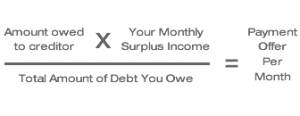Receiving a County Court Judgment (CCJ) claim form or Court Summons can be very scary if you are unaware of your rights as a debtor.
CCJs are usually issued as a result of an underlying debt problem. PayPlan can help relieve the pressure that debt brings.
Received a County Court Summons?
Use our Debt Help Form or call 0800 316 1833 for free debt advice or CCJ advice.
I’ve had a County Court Summons or “Claim” in the post – what should I do?
This needs prompt and urgent attention. A County Court Summons (often printed on blue paper) is sent from the Court to a debtor when a creditor (Claimant) has begun legal proceedings.
Your pack will normally contain the following:-
The “Claim Form” with details of the creditor’s claim.
An “Admission Form” for completion if the claim is not contested.
A “Defence and Counterclaim Form” for completion if the debt is disputed.
An “Acknowledgement of Service” for completion and return if more time is needed.
Guidance on how to complete these forms.
DON’T DELAY! TO AVOID FURTHER ACTION FROM THE COURT, THESE FORMS MUST BE RETURNED WITHIN 14 DAYS
In most cases, you will need to complete the “Admission Form” N9A which contains a section for personal details, an Income/Expenditure section, and a box in which an offer of payment can be made – see guidance notes on competing this form.
An extra 14 days to deal with the matter will be gained if the “Acknowledgement of Service” is completed and posted back – see guidance notes on completing this form.
It’s not a good idea to ignore these documents – failing to respond to the paperwork will lead to a Judgment being passed in favour of the creditor (they will assume you owe the full amount stated and payment in full will be required). If you’re in doubt about how to proceed or have concerns about any issues concerning debt, just give our experienced advisors a call on 0800 316 1833
Filling in the County Court Claim Form.
The “Admission Form N9A” should be filled in very carefully as the details on this form will be used to decide the level of payment that should be made to the creditor.
Complete the top right corner section, naming the court in which the Claim will be heard, the correct case number and the full names of the claimant (creditor) and defendant.
If the amount owed is not disputed tick the relevant box, “I admit the sum claimed”. If the claim is disputed, then tick the other box and fill in the counterclaim section. In most cases there will be no dispute.
Insert your personal details and tick the relevant boxes as to gender and marital status.
Insert the details of your dependants, putting the correct number of children in each age group. The second group, ‘other dependants’, should only be completed for other individuals who are solely dependant on your income.
Complete the section for employment details, using the designated boxes, depending on whether you are employed, unemployed, a pensioner or self-employed.
Provide details of your Current Bank Account and Savings Account: the figures here can be estimated.
Tick the relevant box determining the type of property in which you live. Only tick “own” if the property is entirely in your name. If it is in joint names, tick that box.
Complete this section as carefully as possible. These figures should all be on a monthly basis, the salary/income should be a net figure, i.e. your actual take home pay. Include all benefits. Please include your partner’s salary in the category “others living in my home with me”. Rents should also be included.
Expenses should also be filled in extremely carefully. All figures are again on a monthly basis. It should be noted that the space on the claim is limited, with regard to expenditure. Therefore, it is advisable to combine various types of expenditure under one particular heading in order to give yourself enough room for all your monthly expenses. For example, head a section “transport” and include all petrol, car hire purchase, car tax, MOT, car insurance and other travel costs in there. It is unwise to list any luxuries such as gym memberships, satellite TV, smoking or social activities here as the creditors will not accept these.
The box relating to credit debt is very important. If you only have a few creditors it may be possible to list each one separately. If there are many creditors, it is better to insert the phrase “total credit debt is approximately £…” in the box provided. It is best to state that you are behind with all the contractual payments in the box underneath this.
In the final box, you should state how much you are able to pay each month. This can be calculated as follows
This is known as a Pro-Rata Offer and shows that the monthly surplus has been fairly and justly proportioned between all creditors. Therefore, you will need to negotiate a similar pro-rata offer to remaining creditors – even if they have not commenced legal action.
Sign and date the form in the spaces provided and return to the address on the front of the Claim as instructed in the Notes. Be aware that this address will be that of the creditor. We recommend keeping a copy.
Call PayPlan free on 0800 316 1833 or use our Debt Help Form to submit your debt problem online for free. We know how important it is to protect your family, home and livelihood and can help with all kinds of debt whatever your circumstances.

